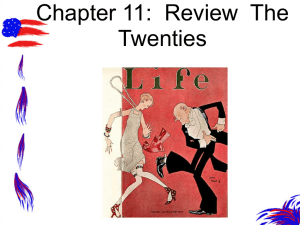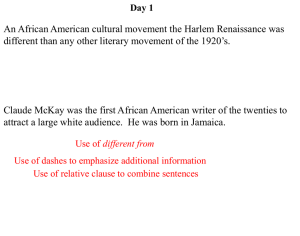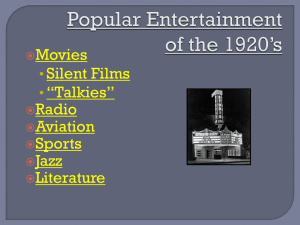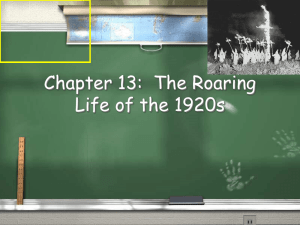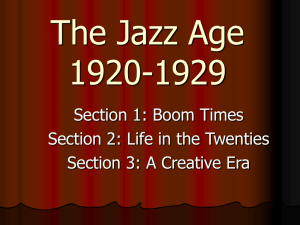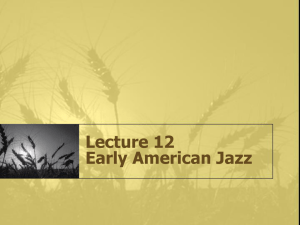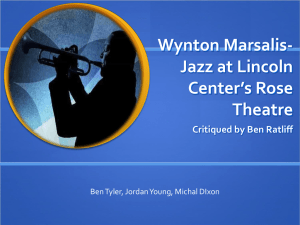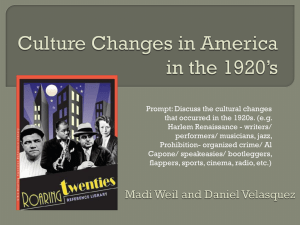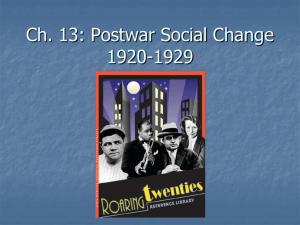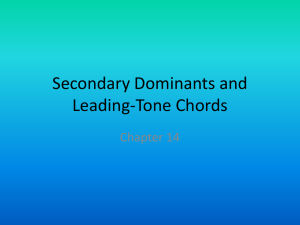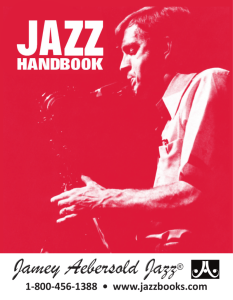Unisa Music Theory Changes, common student errors etc
advertisement
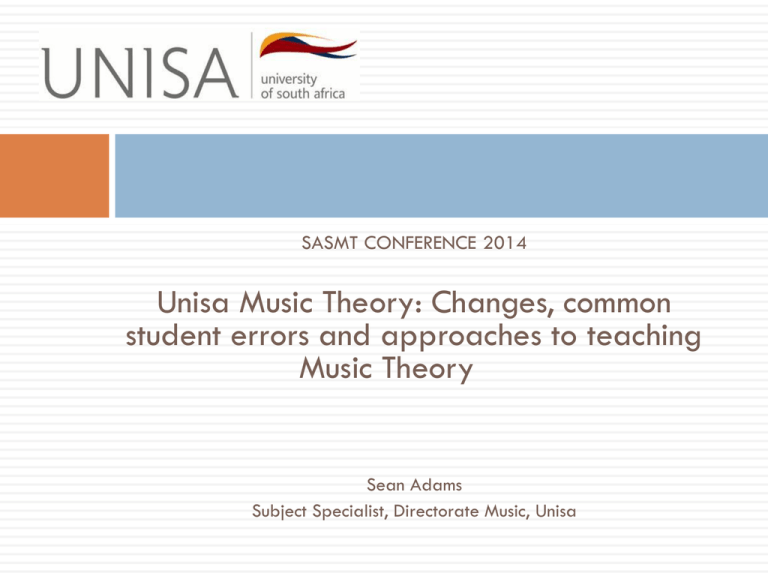
SASMT CONFERENCE 2014 Unisa Music Theory: Changes, common student errors and approaches to teaching Music Theory Sean Adams Subject Specialist, Directorate Music, Unisa Food for thought…. Tell me, and I may forget Show me and I may remember. Involve me and I will learn. (Anonymous pedagogue) Music History ● Joseph Kerman (1985: 42) argued against what he referred to as the positivist approach to teaching music history. By this he meant ‘the presentation of the texts of early music and of facts and figures about it, not their interpretation’. ● Kerman (1985: 43) accused historians of ‘arranging the events of music history, considered as an autonomous phenomenon, into simplistic evolutionary patterns…. Much less attention was paid to the interaction of music history with the political, social and intellectual history. And less attention was paid to the interaction of music history as an aspect of and in relation to culture at large’. ● interdisciplinary approach – the study of the music in the context which it originated, the role it served within the society in which it originated and its role in society today Beethoven’s Ninth ● politicized use of Beethoven’s Ninth Symphony (‘Ode to Joy’) in Nazi Germany and Rhodesia ● use at the opening ceremony of the 1936 Berlin Olympic games ● use of the music of the Ode to Joy for the national anthem of Rhodesia ● Estefan Buch’s Beethoven’s Ninth: A Political History (2004) Women in Music ● Nicholas Cook (2000: 100) stated in his book Music: A Very Short Introduction that ‘the history of music, as it is generally told, is conspicuous by the absence of women’. ● Other female composers such as Clara Schumann, Fanny Hensel, Cecile Chaminade, Amy Beach, Ruth Crawford Seeger, and Nancy van der Vate. ● investigate the instruments that women were allowed to play and the reasons for these limited choices, and the impact of the Second World War on the emancipation of women as musicians and composers. ● Marcia Citron’s Women and Music: A History, and her book Gender and the Musical Canon; Aelwyn Pugh’s Women in Music and Ruth Solie’s Musicology and Difference: Gender and Sexuality in Music Scholarship African, South African and Popular Music Styles ● inclusion of indigenous music – music and migrancy, Shembe hymns ● music from other African countries such as Zimbabwean mbira music and the polyrhythmic ensembles of Ghana ● South African music styles such as maskanda, bubblegum, kwaito, house music, ghoemaliedjies, the music of the Cape minstrels, SA Jazz, Afrikaans pop music ● hip-hop, funk, rock ● music and society, music and meaning Useful Music History Resources Books: ● ● Coplan, D. B. 1985. In Township Tonight. New York: Longman Inc. Ballantine, C. 2012. Marabi Nights: Jazz, ‘Race’ and Society in Early Apartheid South Africa. Scottsville, South Africa: University of KwaZulu-Natal Press. ● Lucia, C. (ed). 2005. The World of South African Music: A Reader. Newcastle: Cambridge Scholars Press. ● Martins, D. C. 2013. Sounding the Cape: Music, Identity and Politics in South African Minds. ● Muller, C. A. 2004. South African Music: A Century of Traditions in Transformation. Santa Barbara, CA: ABC-Clio. ● Muller, C. A. 2008. Focus: Music of South Africa. New York: Routledge. South African Music Journals: ● Musicus: A South African Journal for Music teaching ● Muziki: Journal of Music Research in Africa ● Journal of the Musical Arts in Africa South African Music website: www.music.org.za Jazz Theory ● ● ● ● ● will commence at grade 6 level. Both Jazz Theory and Western Art Music candidates will use the same curriculum and enter for the same Theory exams (WAM) for Pregrade 1 – Grade 5 as they need to acquire the same music competencies. Separate stream for grades 6 – 8 where jazz theory students will focus more intensely on topics specific to the genre which will include Jazz Harmony, Jazz Improvisation, Jazz History and Jazz Arranging Techniques. Resources: Mark Levine’s The Jazz Theory Book (Sher); Mark Gridley’s Jazz Styles: History and Analysis (11th edition – Pearson); Shelton Berg’s Alfred’s Essentials of Jazz Theory (Books 1, 2 and 3) Music theory ● ‘Music is the art of sound’ - Alfred Blatter (2007) ● teach the Music in Theory ● musical rather than a technical approach to teaching Music Theory ● intervals: semitone method……?? For an interval to be major or perfect the top note must appear in the major scale of the bottom note ● Roman chord figuring: 5/3; 6/3; 6/4 rather than a, b, c ● tension and relaxation ● assessment as pedagogical tool Music theory continued Example: Assessment schedule for a Grade VI harmony exercise: Chord choice/chord progression 7/9 Voice-leading 4/6 Grammar 3/6 Modulation 3/5 Dominant seventh quartads 2/3 Secondary dominant sevenths 2/3 Non-harmonic notes 2/3 TOTAL 23/35 Music Theory continued Example: An assessment schedule for a Grade VI melody writing exercise: Motivic development 3/5 Melodic contour 2/3 Modulation 3/4 Rhythm 2/2 Phrasing 2/2 Dynamics 1/2 TOTAL: 13/18 Changes to Music Theory Grade 2: ● Note values: add the dotted quaver and semiquaver ● Time signatures: add 6/8; 9/8 Grade 3: ● Time signatures: add 2/2; 3/2; 4/2 Grade 6: ● Counterpoint: Replace the two-part writing exercise with the analysis of two-part inventions Nos 1 - 8 of JS Bach. ● Harmonic analysis of ANY given music excerpt containing the elements that have been studied at this level Changes to Music Theory continued ● Schubert: The characteristics of the lied, the relationship between the song text and the music, and the relationship between the voice and piano accompaniment. ● Form Analysis: Replace Beethoven’s Sonata in B flat major, Op 22 (first movement) with Mozart’s Piano Sonata in C, K. 309 (first movement) Grade 7 and 8: Women in Music, African Music/World Music, SA Music styles, SA Jazz – interdisciplinary approach; alignment with current trends in Music Scholarship Common Student Exam Errors Pregrade 1: ● Grouping – 4 quavers beamed as 2 groups of 2 quavers Grade 1: ● Beaming quavers in 2/4 and 3/4 time in groups of pairs ● Neglecting to add a time signature to the tonic solfa transcription Grade 2: ● The rhythm of the solfa poses a problem ● not raising the leading note in the dominant triad ● transposing the passage two octaves lower instead of one. Grade 3: ● With the figuring of triads attention needs to be given to the correct figuring in order to distinguish between the different types of triads. Common Student Exam Errors cont. Grade 4 ● correct figuring of chord in order to distinguish between the different chord types (major, minor, augmented diminished). The figuring should also be used as a guide to determining the keys. ● the leading note is often not raised in four-part chords in minor keys. ● Students mistakenly often view the bass note as the root of the chord and do not take inversions into account. Grade 5 ● the structure of melodies and the use of meaningful articulation and dynamics. ● many candidates ignore the instructions and leave notes unharmonised due to a lack of understanding of chord progression Common Student Exam Errors cont. Grade 6.1 Melody writing ● modulate to the correct keys and at the correct places ● have good melodic contour and line shape; Four-part with modulation ● identifying the key(s) correctly; knowing which keys to modulate to and using the correct modulation procedures ● the use of the necessary accidental(s) once a modulation has taken place ● distinguishing between harmonic and non-harmonic notes ● singing the given melody to ascertain where the cadences are and including proper cadences at those points ● generally a very poor understanding of harmonic rhythm ● correct resolution of the dominant and dominant seventh chords and secondary dominant seventh chords Common Student Exam Errors cont. Analysis: ● Figure the chords correctly in order to distinguish between the different types (major, minor, augmented, diminished) ● indicate the inversions of chords; attention needs to be given to the identification of non-harmonic notes Grade 6, 7 and 8 (Paper 2) ● in many instances questions are answered rather superficially, lack academic substance and lack of sufficient engagement with the s ubject matter. ● need to acquire a much greater aural awareness of the pieces to be analysed through repeated listening – while doing the analysis the candidates should be able to hear the composition(s) in their heads Common Student Exam Errors cont. Grade 7 (Paper 1) ● candidates do not think in terms of sound rather of applying "rules" on paper. ● are not comfortably familiar with chromatic harmonic language ● Canons: present quite big problems harmonically. Poor knowledge of the imitative technique should be evident - should also make some harmonic sense. Grade 8 (Paper 1) ● use of a piano allowed ● musical style and taste Closing thought…. ‘Music expresses that which cannot be said and on which it is impossible to be silent’ Victor Hugo ‘I believe in God, Mozart and Beethoven’ Richard Wagner

